This post may contain affiliate links. Please read our privacy policy.
Having trouble with getting your baked goods to turn out correctly? Sometimes the solution is simpler than you think! Learn how to measure flour correctly to avoid some basic baking errors.
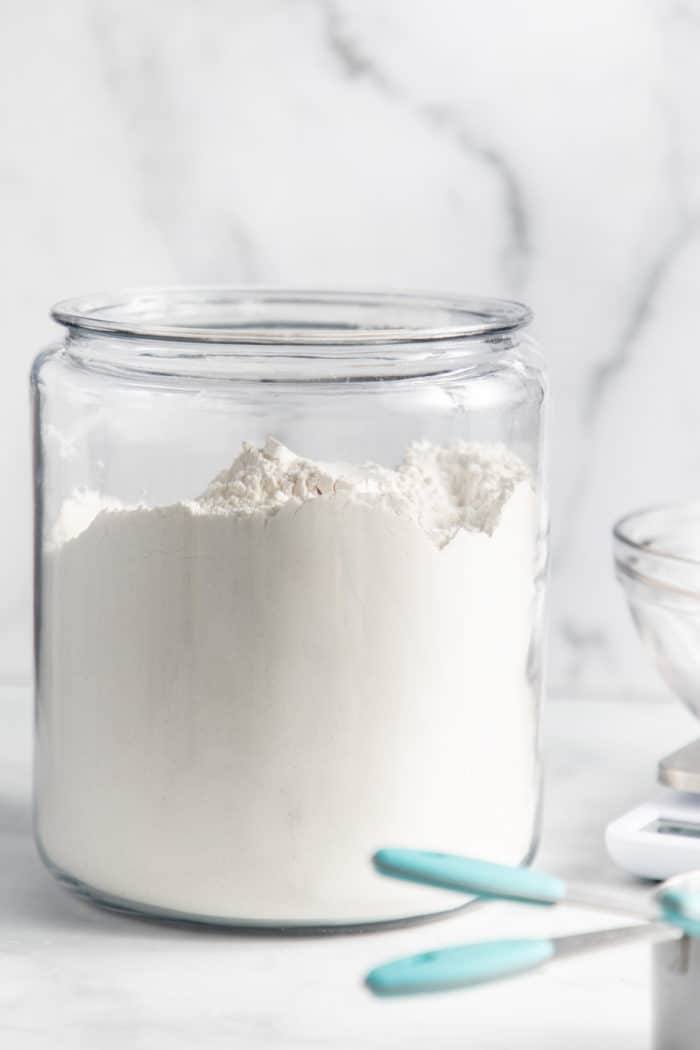
As a food blogger, I try to provide my readers with great recipes that have been tested thoroughly in my kitchen.
However, sometimes a recipe that worked well for me turns out a little less than perfect for a friend or reader.
Whenever my friends ask me why something didn’t turn out right – whether it’s my favorite chocolate chip cookies, the best chocolate cake, or homemade Bisquick, typically the first question I ask is, “How did you measure the flour?”
For years I thought dipping the measuring cup directly into the flour sack was an accurate means of measurement. However, when I started to teach myself how to bake – I realized this method can be pretty inaccurate.
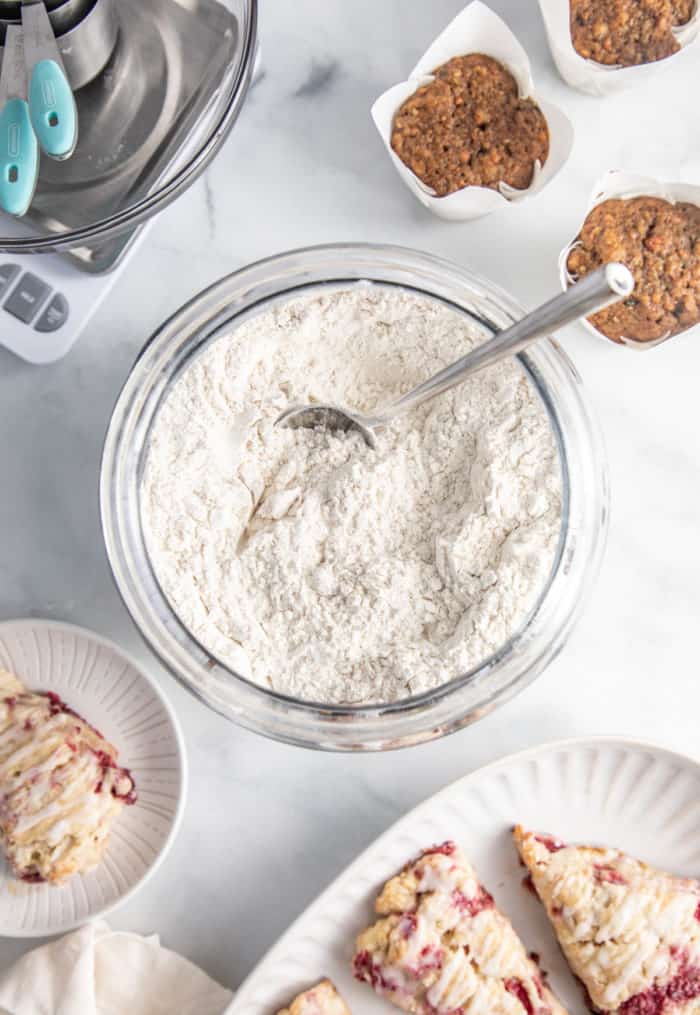
Pin this now to find it later
Pin ItWhy Your Measuring Method Matters
I decided to conduct a little kitchen experiment and measure a cup of all-purpose flour two ways.
Here were the results:
- Scooping a measuring cup into the flour and leveling: 6 oz in weight
- Spooning the flour into a measuring cup and leveling: 4.25 oz in weight
Pretty big difference, right? Especially when it comes to baking. Because just a couple extra ounces of flour can really change the texture of a baked good.
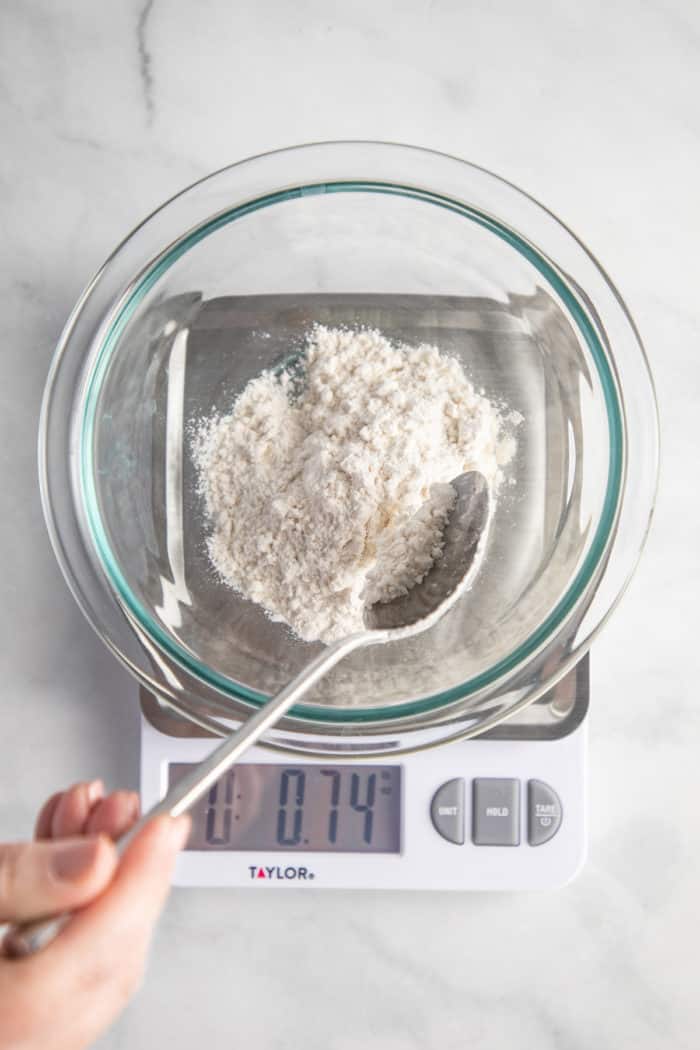
The important thing to remember is that, much like brown sugar, flour packs. Scooping the ingredient with your measuring instrument will cause packing.
Packed flour can add up quickly!
If you have a recipe with 3 cups of flour, and you scoop using your measuring cup, you could end up with 18 ounces of flour, when in reality you should have 12.75 ounces of flour.
That’s nearly an extra 3/4 cup of flour in your recipe!
That can dramatically change the results you get from a finished baked good.
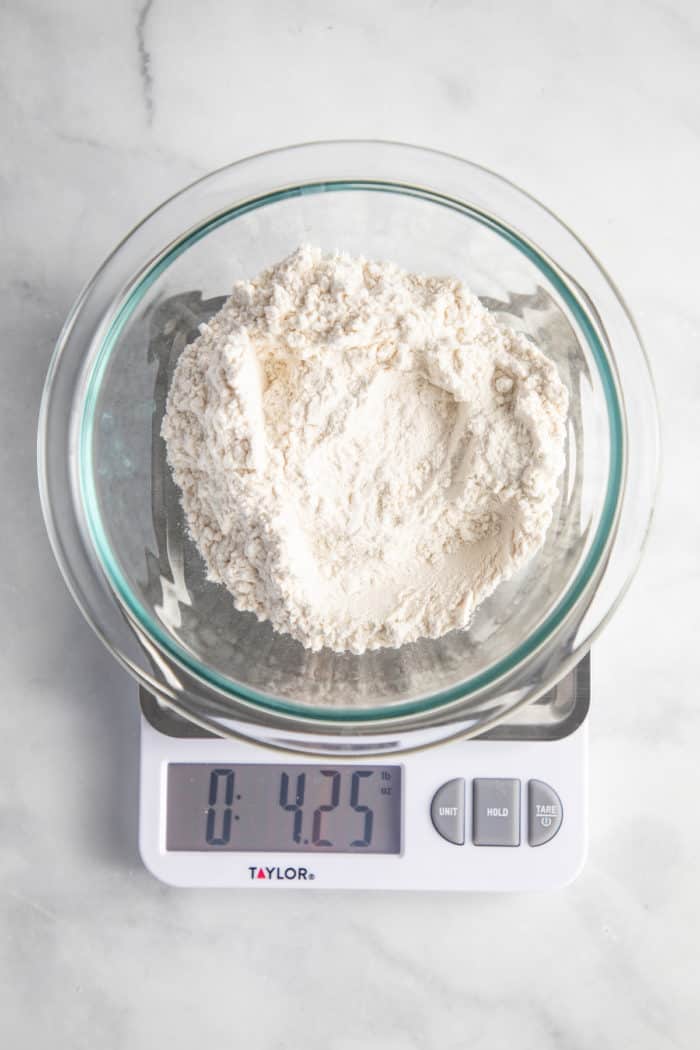
How to Measure Flour for Baking
Flour measurements can be one of the biggest variables when it comes to the finished product in baking. Weighing ingredients is by far the most accurate, but not a common practice here in the U.S.
If you’re an Alton Brown fan – like I am – you know from Good Eats that this is pretty much the only way he measures dry ingredients.
A digital scale can come in handy and is useful for more than just measuring your sugar and flour.
I use mine a lot to weigh small packages for click and ship labels via USPS, and they are also great for figuring out correct portions of meat and other items when needed.
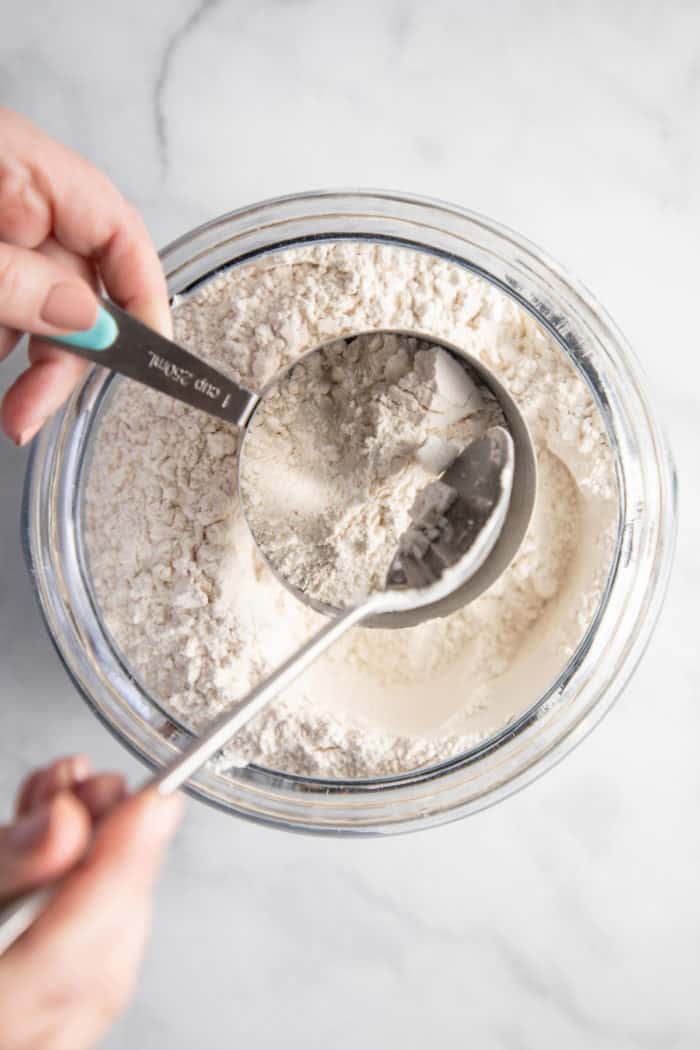
How do I Measure Flour Without a Scale?
If you don’t own a scale, when it comes to dry ingredients, you’re more than likely using a measuring cup.
Many people use measuring cups with perfect results. But remember that they can be incredibly inaccurate depending upon the method of adding the flour to the cup that you use.
What measuring cups should you use?
Although I grew up using both liquid and dry measuring cups, I’ve come to realize through blogging that a lot of people don’t own both types of cups and some don’t know that two types of measuring cups exist.
So, let’s start with the basics – if you’re going to bake, I strongly recommend picking up a set of dry measuring cups as well as at least one liquid measuring cup.
Both can be found in pretty much any store including places like Target, Amazon, the grocery store and even the dollar store.
Make sure you use the dry measuring cups for measuring flour, sugar, and other dry ingredients. Save the liquid measuring cup for milk, water, and other liquid ingredients.
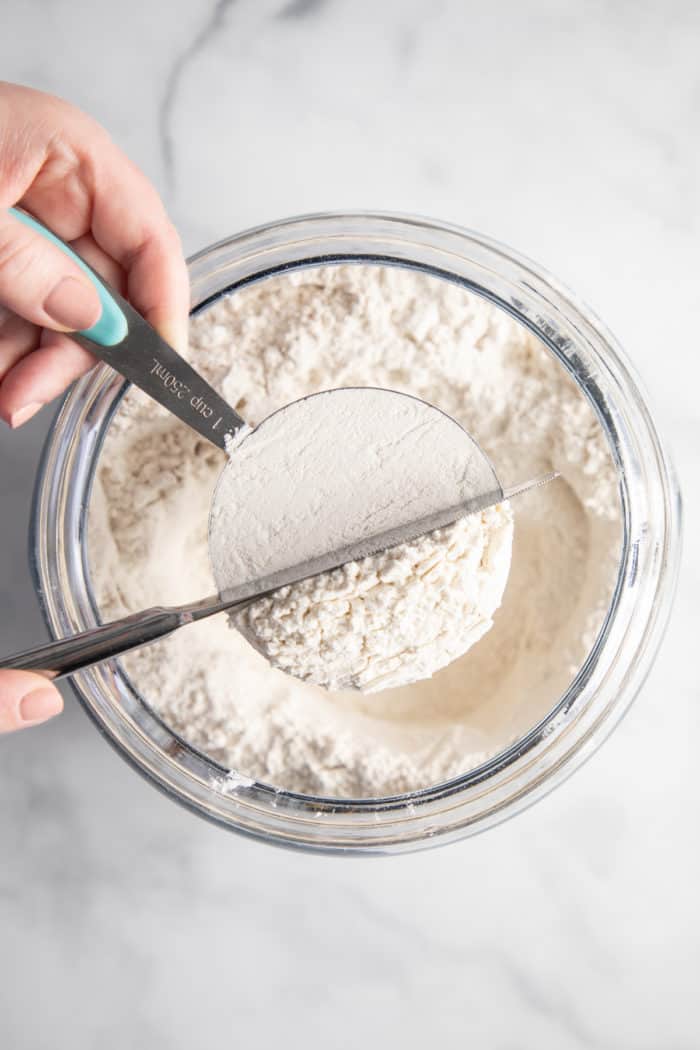
How to get an accurate flour measurement with a measuring cup
Here’s how to get a pretty accurate measurement without the use of a scale:
- Use a spoon to fluff up the flour within the container.
- Use a spoon to scoop the flour into the measuring cup.
- Use a knife or other straight edged utensil to level the flour across the measuring cup. I have a plastic straight edge that I keep in my flour bin at all times for just this purpose.
And that’s it! Now you know how to measure flour the right way so your baked goods are as perfect as possible.
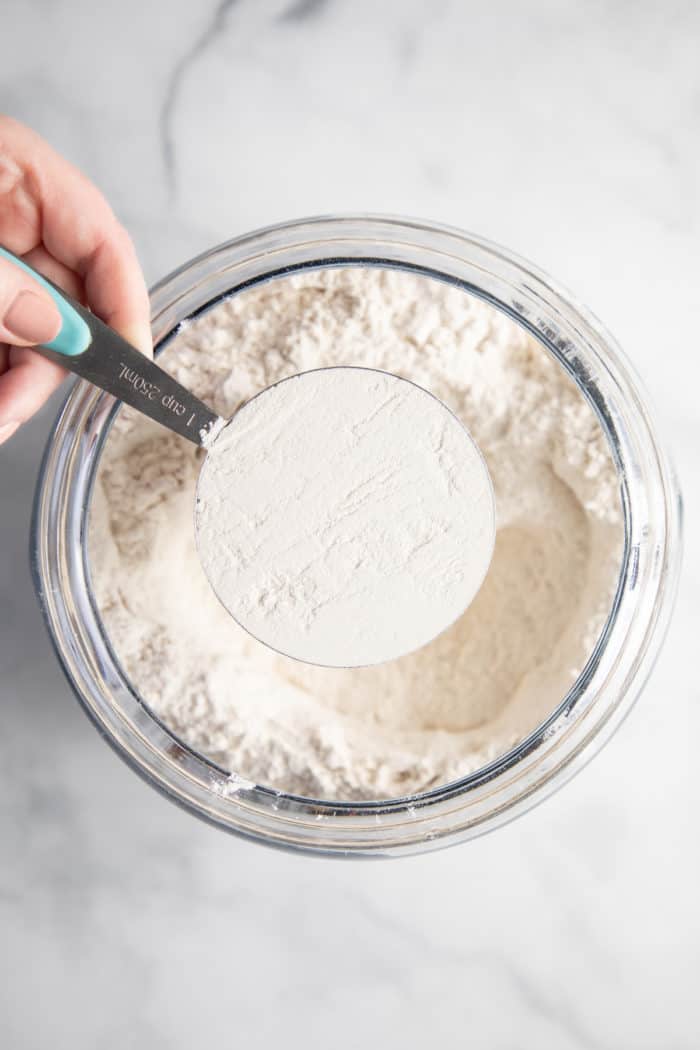
Commonly Used Weight Measurements
Here are some helpful common volumetric measurements and their weight equivalents for quick reference.
All measurements are in ounces by weight, not fluid ounces.
Flours
- all-purpose flour: 1 cup weighs 4.25 ounces
- cake flour: 1 cup weighs 4 ounces
- bread flour: 1 cup weighs 4.25 ounces
Sugars
- granulated white sugar: 1 cup weighs 7 ounces
- confectioners’ sugar (powdered sugar); unsifted: 1 cup weighs 4 ounces
- light or dark brown sugar; packed: 1 cup weighs 7.5 ounces
Butter
- butter: 1 cup weighs 8 ounces
I also definitely recommend printing out a copy of this Ingredient Weight Chart from King Arthur Flour. I laminated mine because I am kind of a messy baker. The list hangs from the side of my fridge, and I can honestly say it is one of my most used kitchen resources.
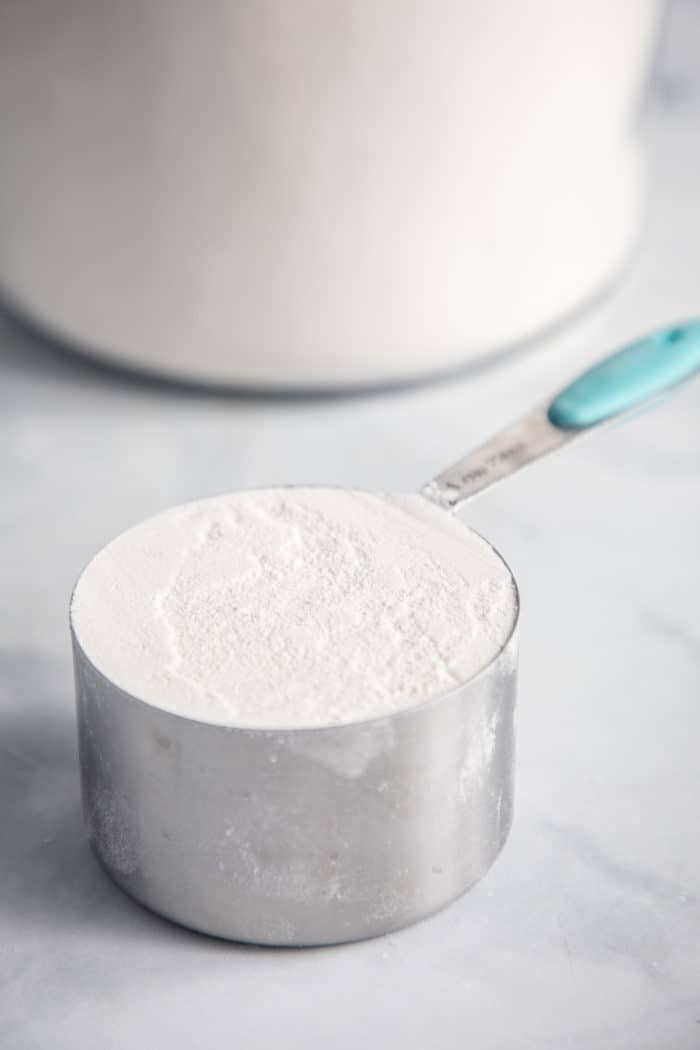
More Helpful Kitchen Tips
Whether you’re a beginner baker or a veteran in the kitchen, there are a few kitchen substitutes and tips that are helpful to keep in mind.
Whip up this simple buttermilk substitute to use in any baking recipe calling for buttermilk.
This brown sugar substitute is also a handy trick to keep in mind in case you find yourself out of brown sugar while in the middle of baking.
It’s also handy to know how to soften butter and how to soften cream cheese quickly! I always forget to set mine out, so I use these tricks all of the time.
How to Measure Flour
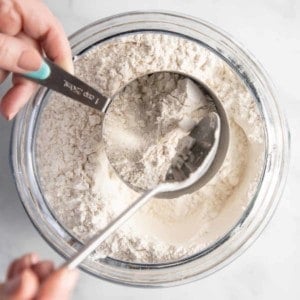
Equipment
- Spoon
- Knife or other straight-edged utensil
Ingredients
- All-purpose flour
Instructions
- Use a spoon to fluff up the flour within the container.
- Use a spoon to scoop the flour into the measuring cup.
- Use a knife or other straight-edged utensil to level the flour across the measuring cup. I have a plastic straight edge that I keep in my flour bin at all times for just this purpose.
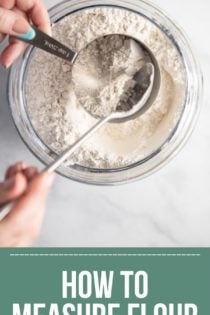
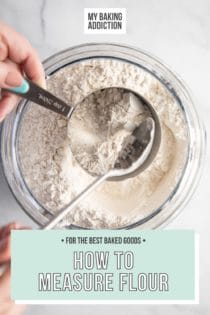
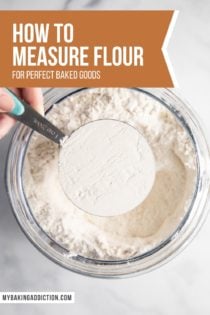
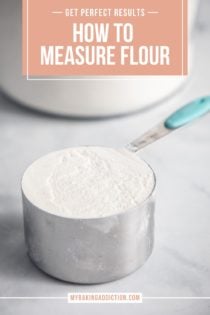
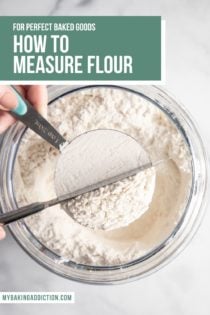









YAY! As it turns out – I’ve been measuring it right all these years!
I would never bake or cook without my scale. This “cup business” is just not for me.
This is so helpful! Amazing to see the weight difference from scooping to spooning the flour. Thanks so much for posting!
Wow I didn’t know this about measuring flour! Might need to go get myself one of them scales!
Thanks for the tips! Guess I’ve been doing it wrong all these years… So this made me think, are you suppose to apply this same method when measuring powdered sugar?
This is uselful and important article! Thanks
Interesting! I just baked cookies the other day and was thinking about this exact thing. I’ll be more careful next time.
jamie- this is great! thanks so much for posting a helpful article like this! :)
Thank you for this! I am new to baking/cooking and when I first started, I didn’t know there was a difference between the dry measuring cups and liquid until my husband told me… oopsie..but you have to learn sometime….=)
WOW, what a great post! I had no idea the weight would vary that much! I guess I will be using my scale more often now!!
Thanks so much!